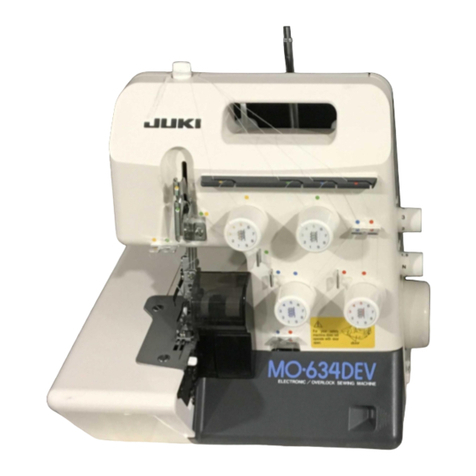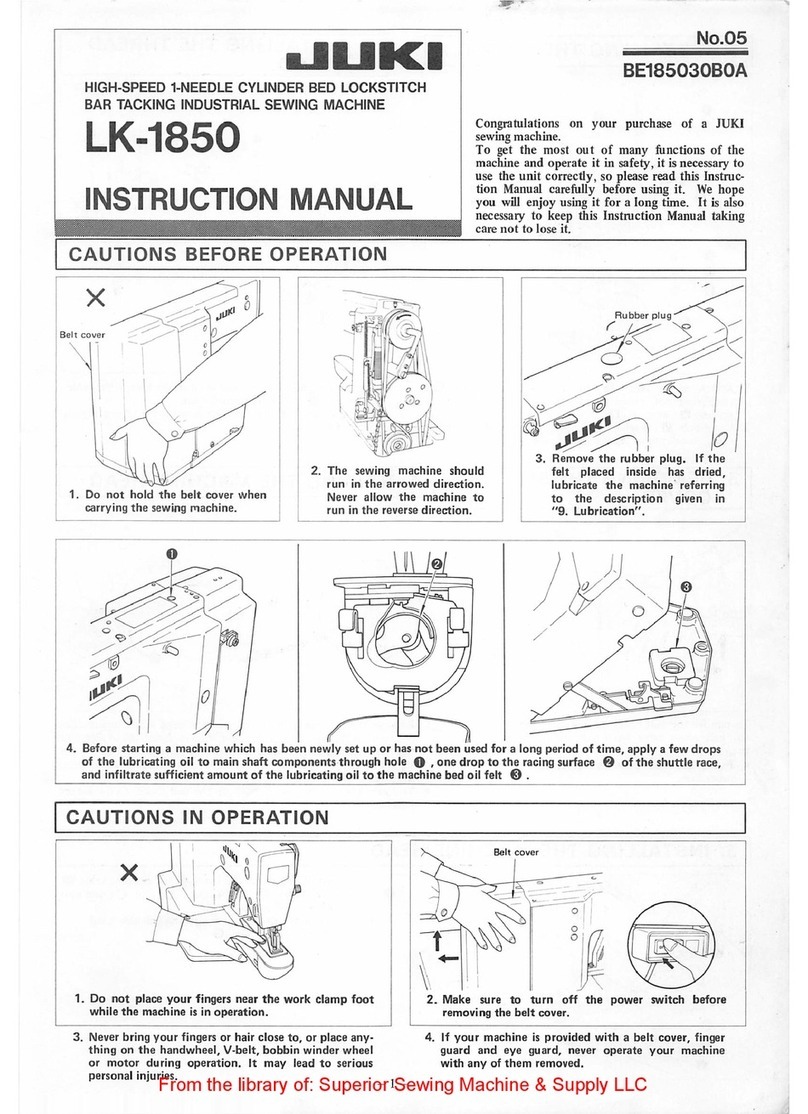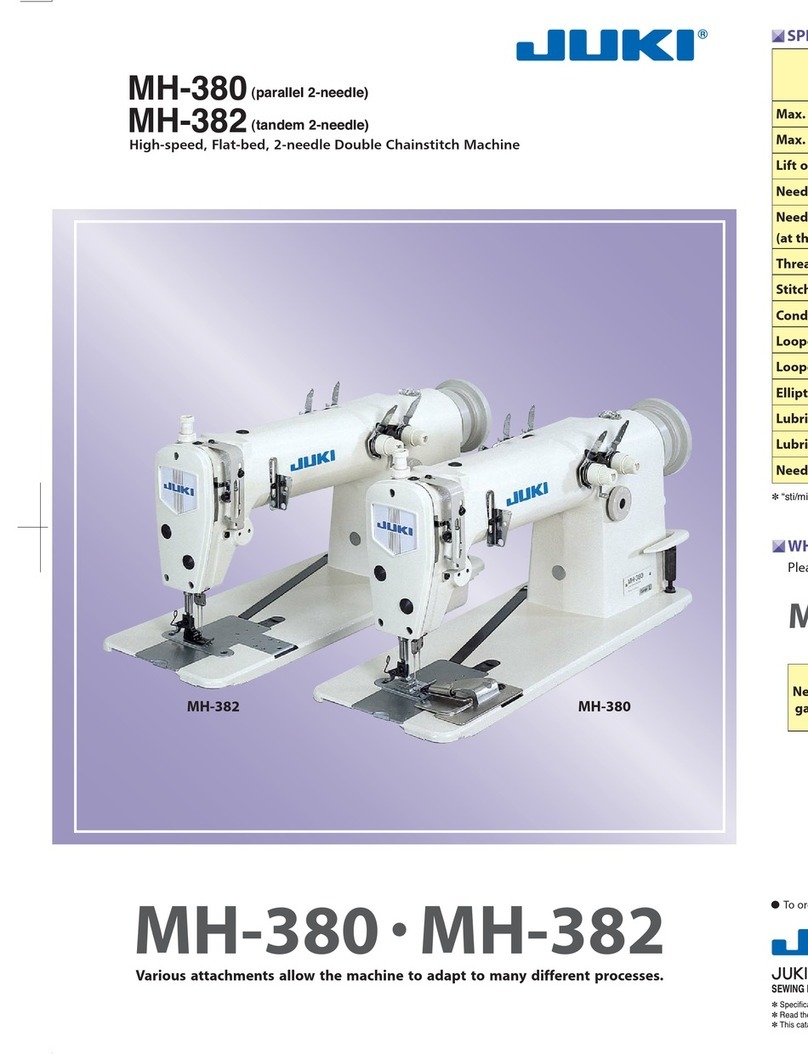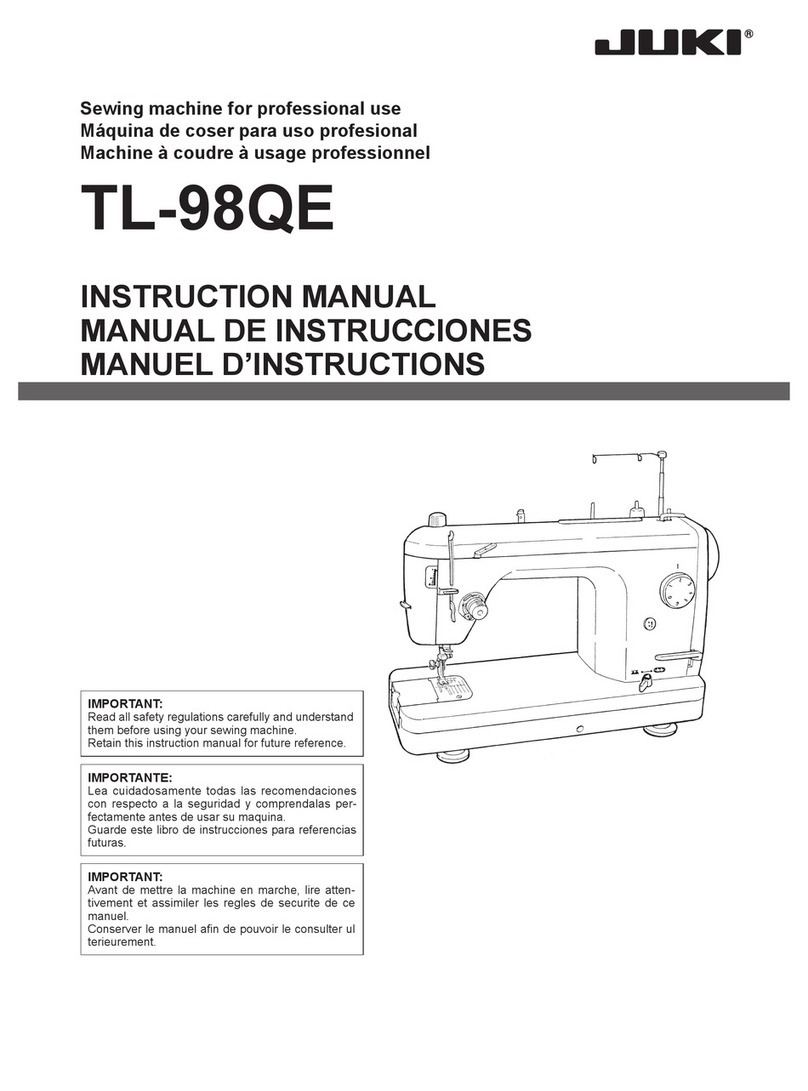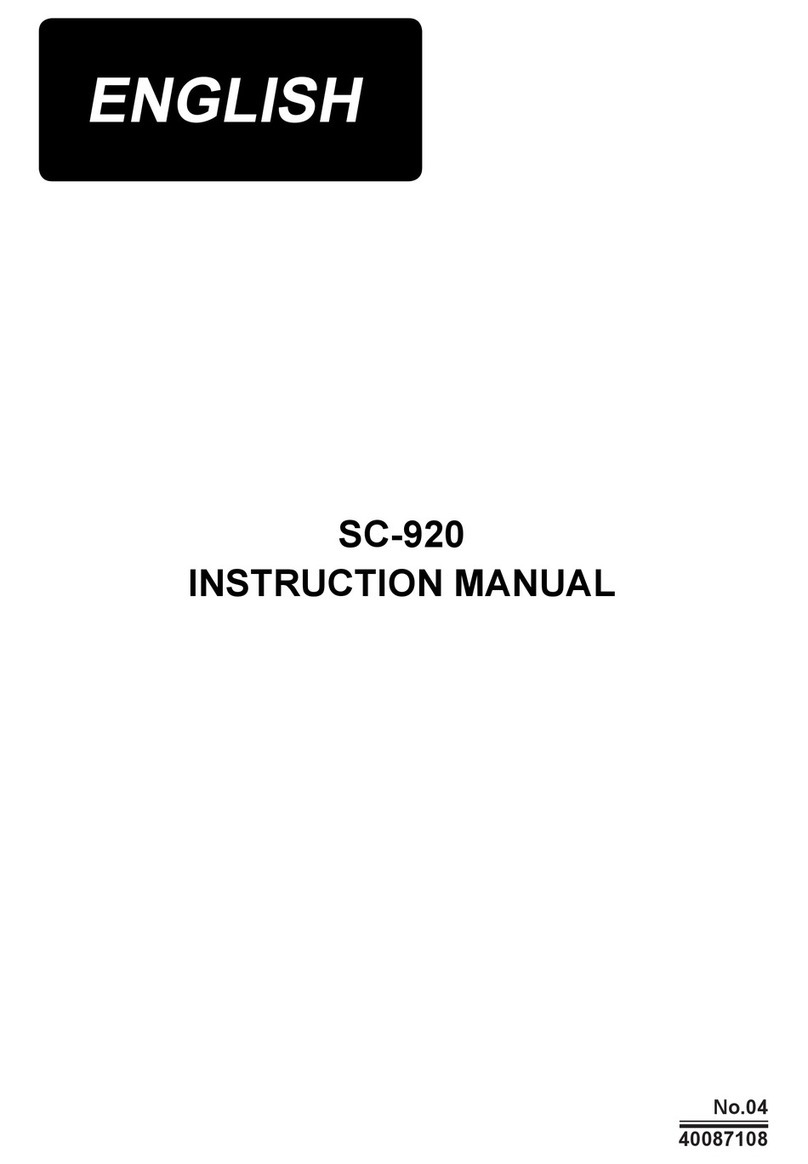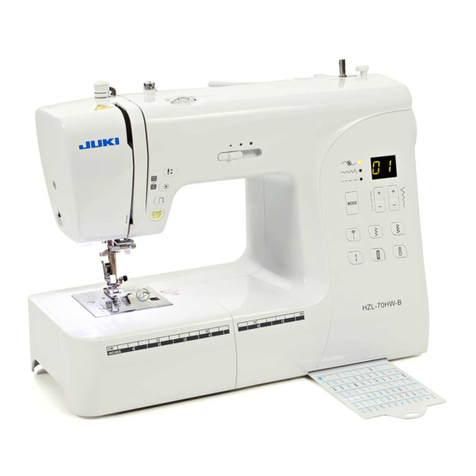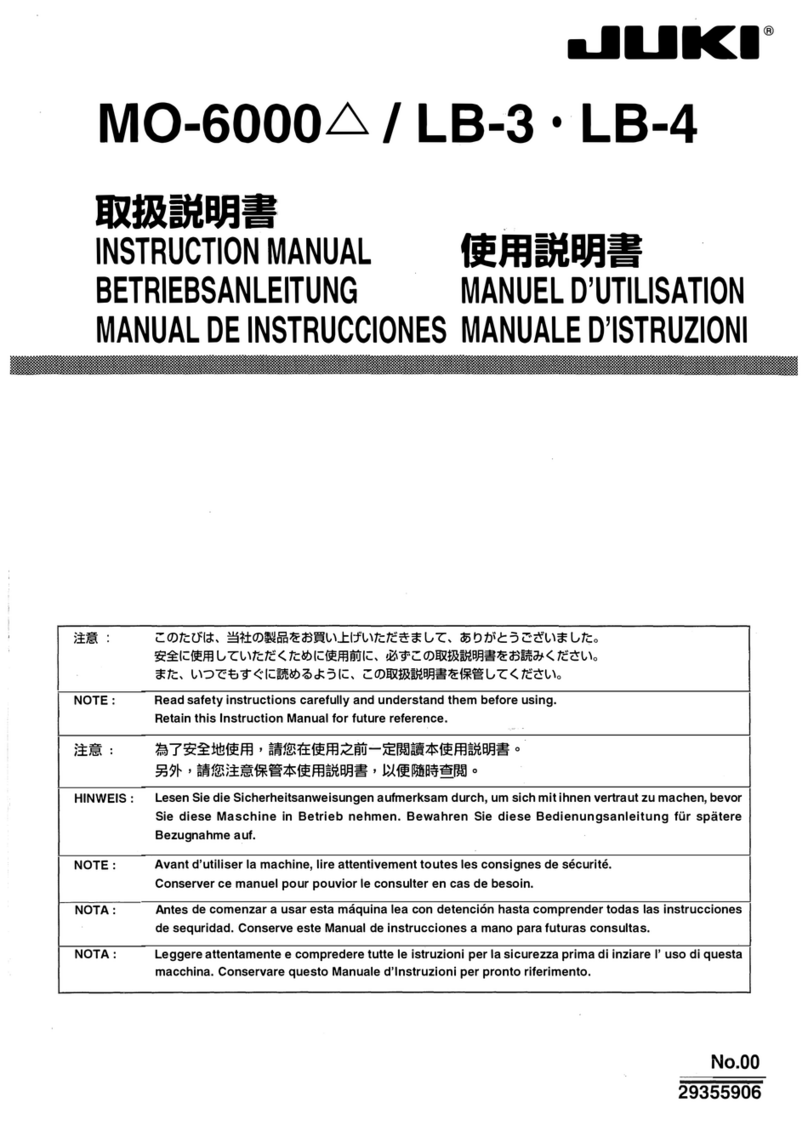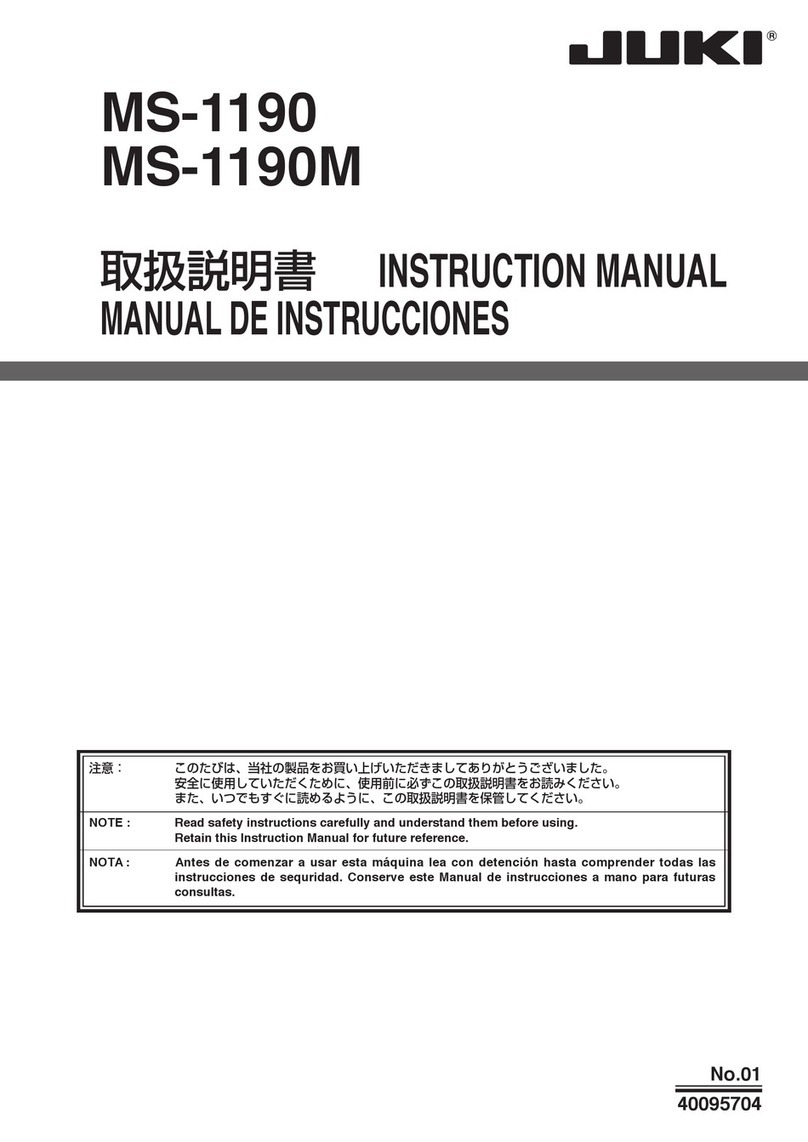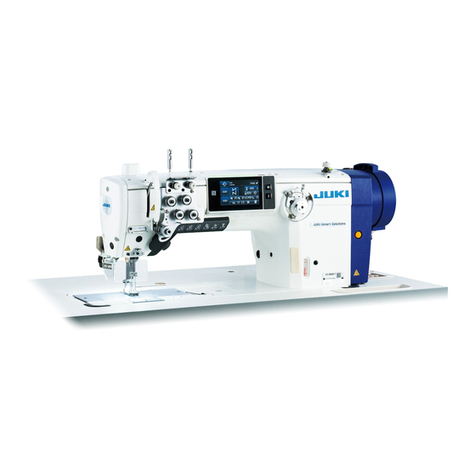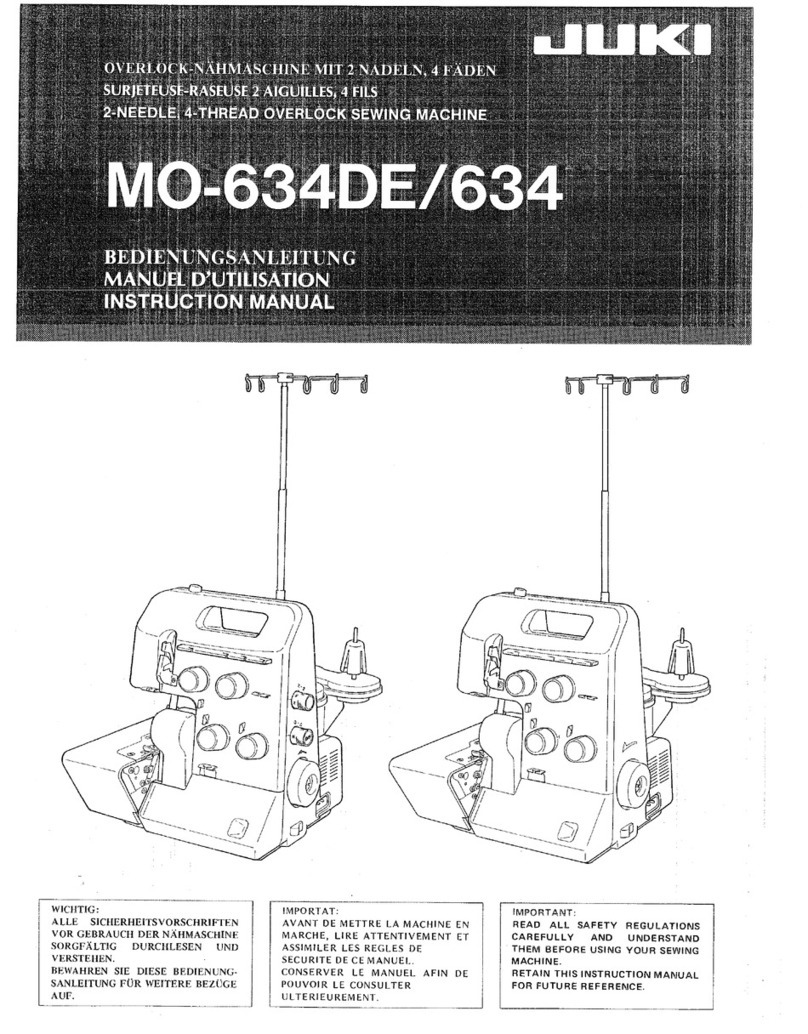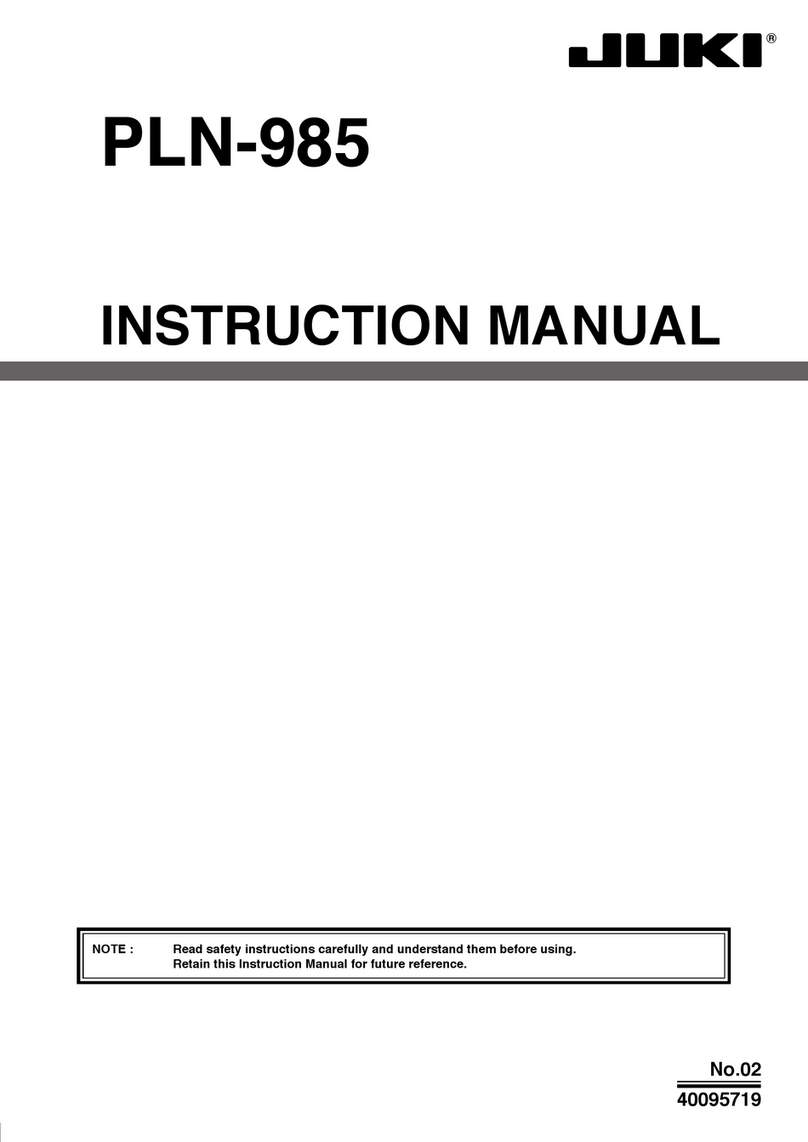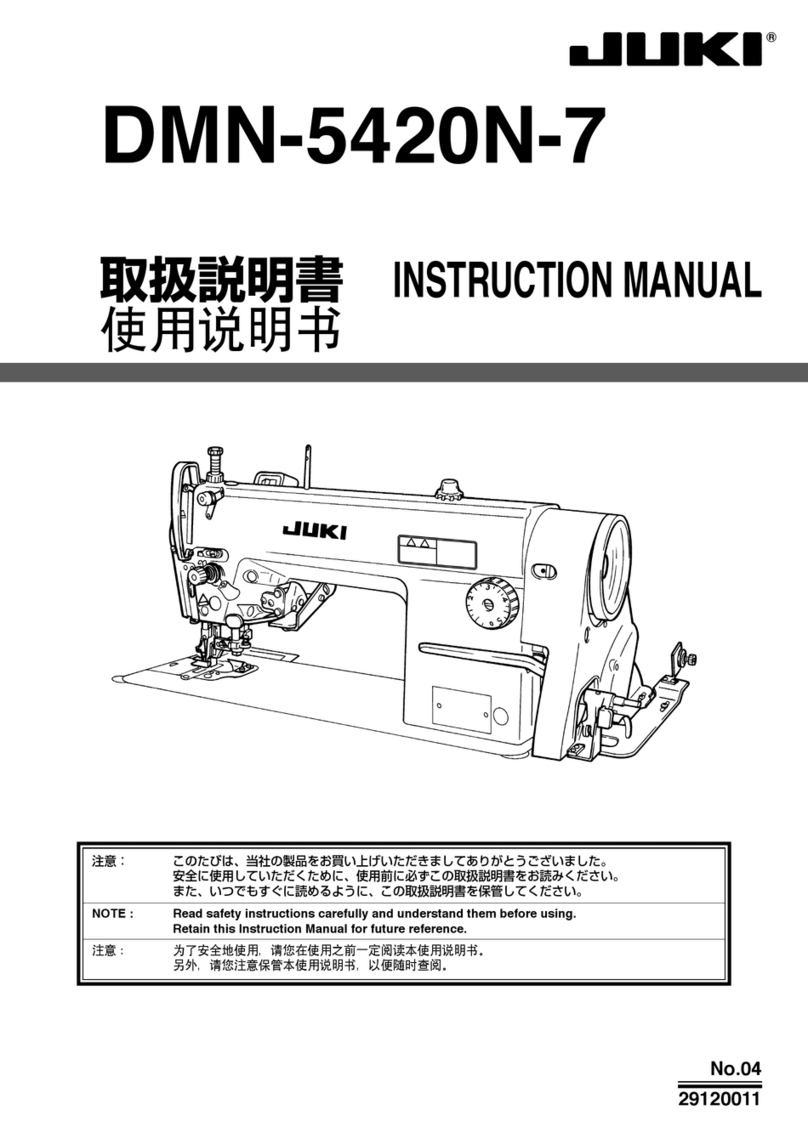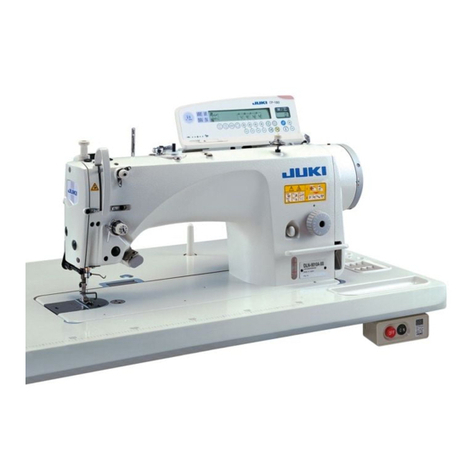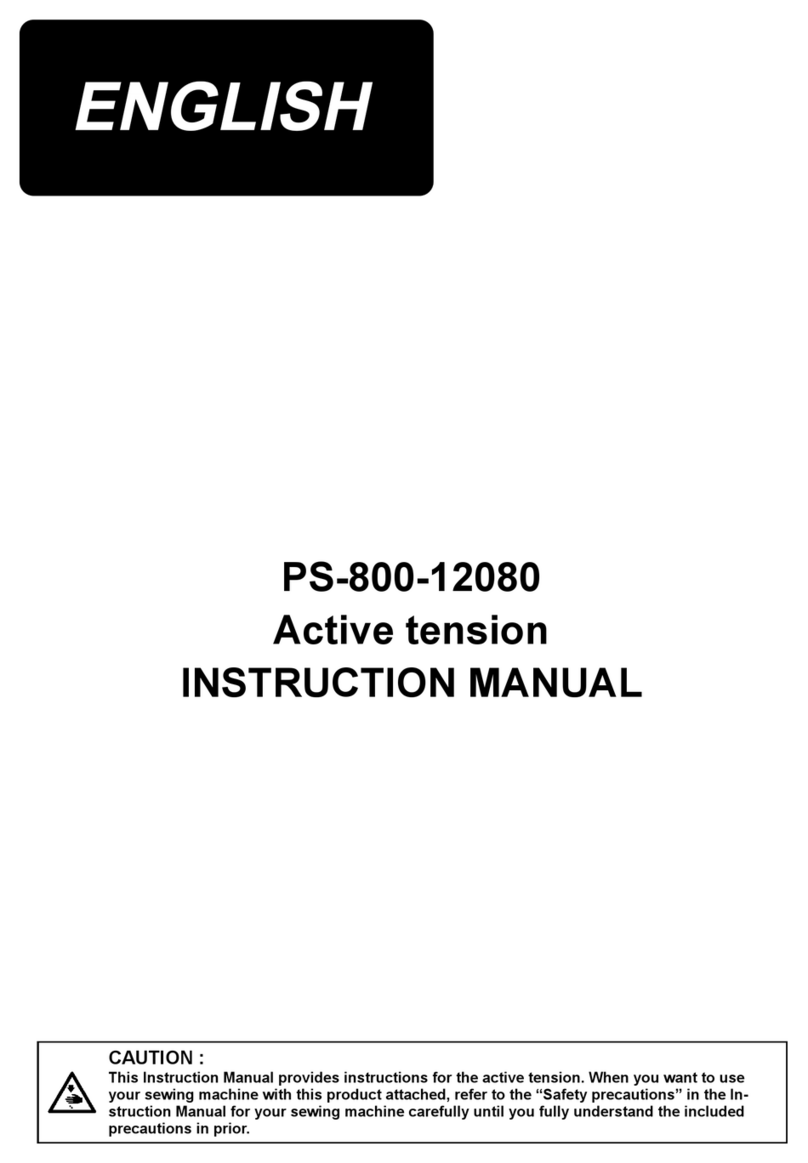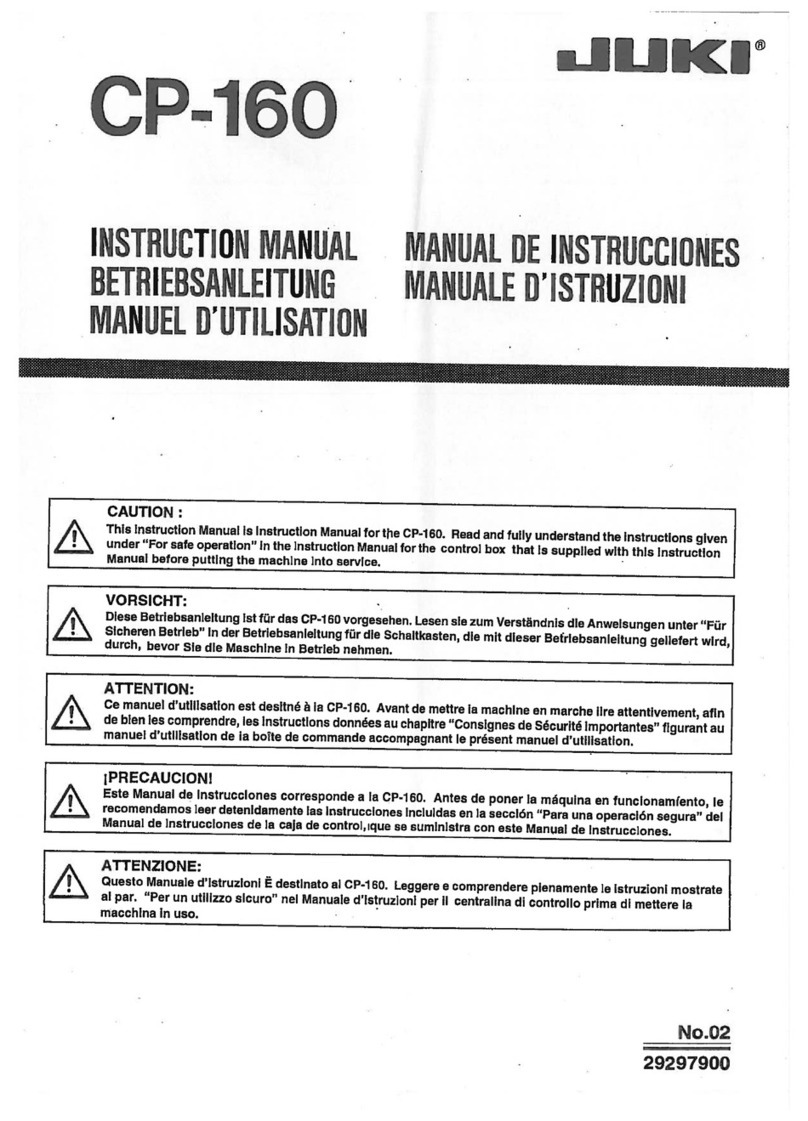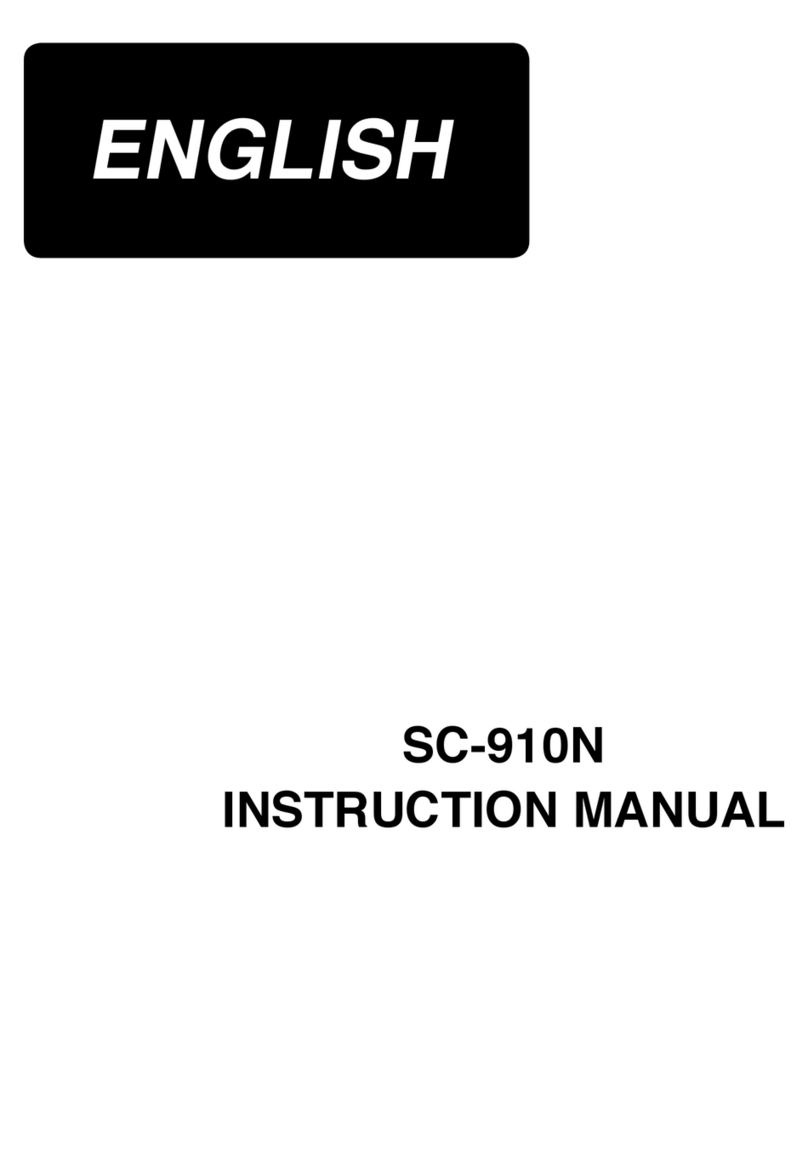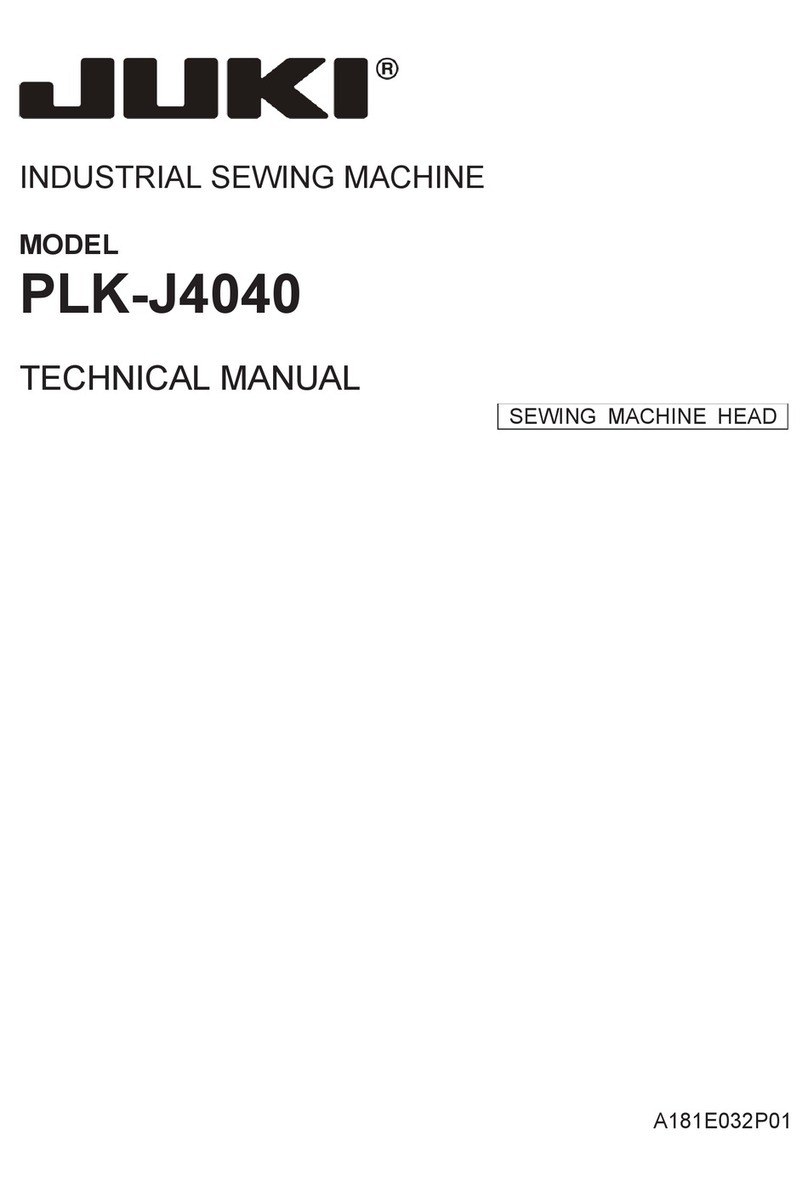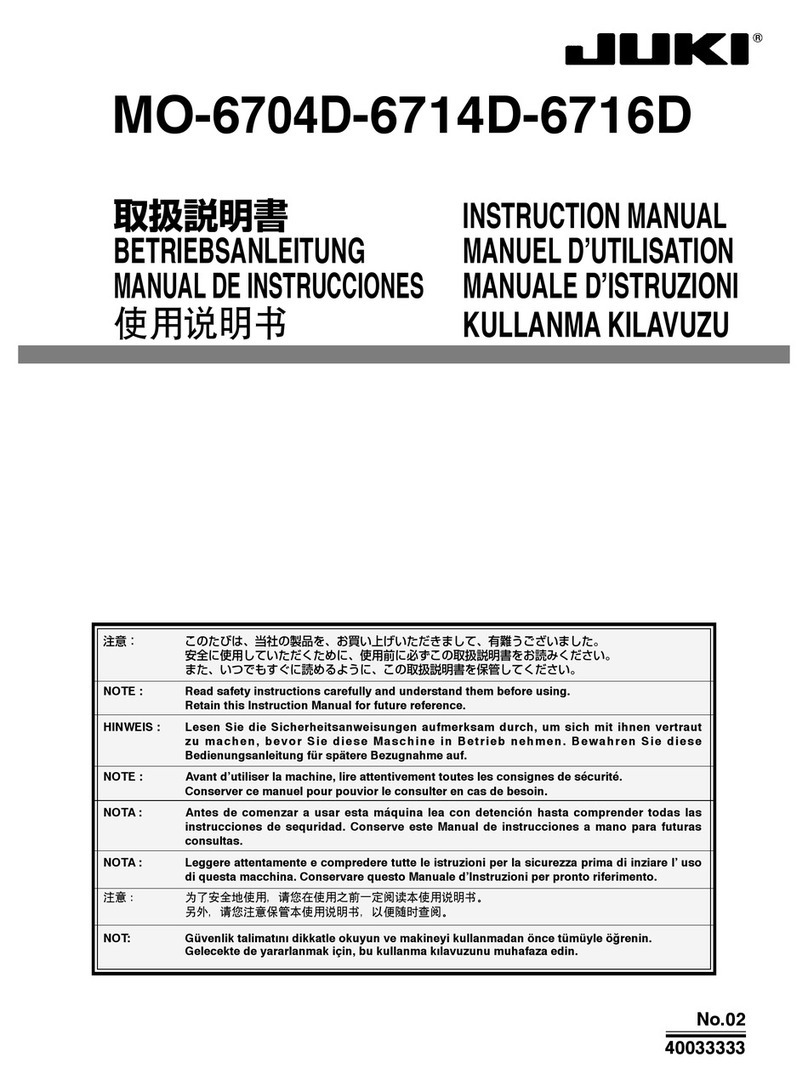CONTENTS
1. SPECIFICATIONS ............................................................................................. 1
2. CONFIGURATION OF THE MACHINE COMPONENTS .................................. 2
3. MODEL NUMBERING SYSTEM ....................................................................... 3
4. MOTOR PULLEY AND BELT MF-7700 Series ................................................ 4
5. STANDARD ADJUSTMENT ............................................................................. 5
(1)Threading the machine head ........................................................................................... 5
(2) Adjusting the rocking thread take-up............................................................................. 7
(3) Adjusting the position of the needle thread guide rod ................................................. 9
(4) Adjusting the position of the thread receiver .............................................................. 11
(5) Adjusting the position of the spreader thread guide and spreader thread take-up ...... 13
(6) Adjusting the spreader .................................................................................................. 15
(7) Adjusting the timing relation between the looper and needle bar............................. 19
(8) Retuming amount of the looper .................................................................................... 21
(9) Height of the needle ....................................................................................................... 23
(10) Locus and longitudinal motion of the looper ............................................................ 25
(11) Adjusting the needle guard ......................................................................................... 27
(12) Instlling cover of the looper and needle guard after adjusting ................................ 31
(13) Adjusting the feed dog................................................................................................. 33
(14) Adjusting the feed relation .......................................................................................... 39
(15) Adjusting the presser foot........................................................................................... 41
(16) Adjusting the micro-lifter............................................................................................. 43
(17) Adjusting the looper thread cam ................................................................................ 45
(18) How to change needle bar stroke ............................................................................... 47
(19) How to change the spreader ....................................................................................... 51
(20)With reagard to lubrication .......................................................................................... 53
(21) Adjusting and setting SC-380...................................................................................... 55
6. TROUBLES AND CORRECTIVE MEASURES............................................... 57
7. DRAWING OF TABLE (SEMI-SUBMERGED TYPE) ..................................... 71


